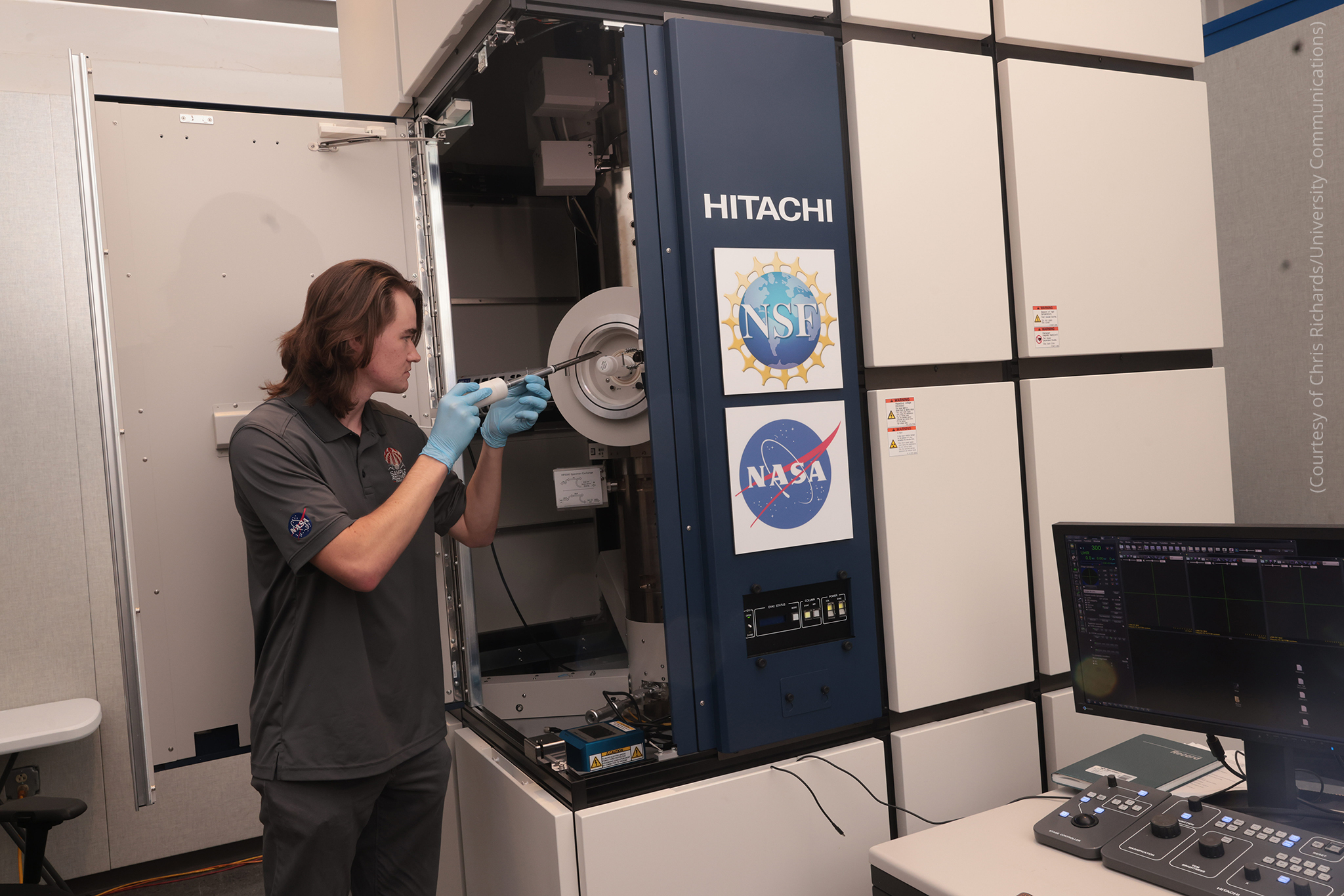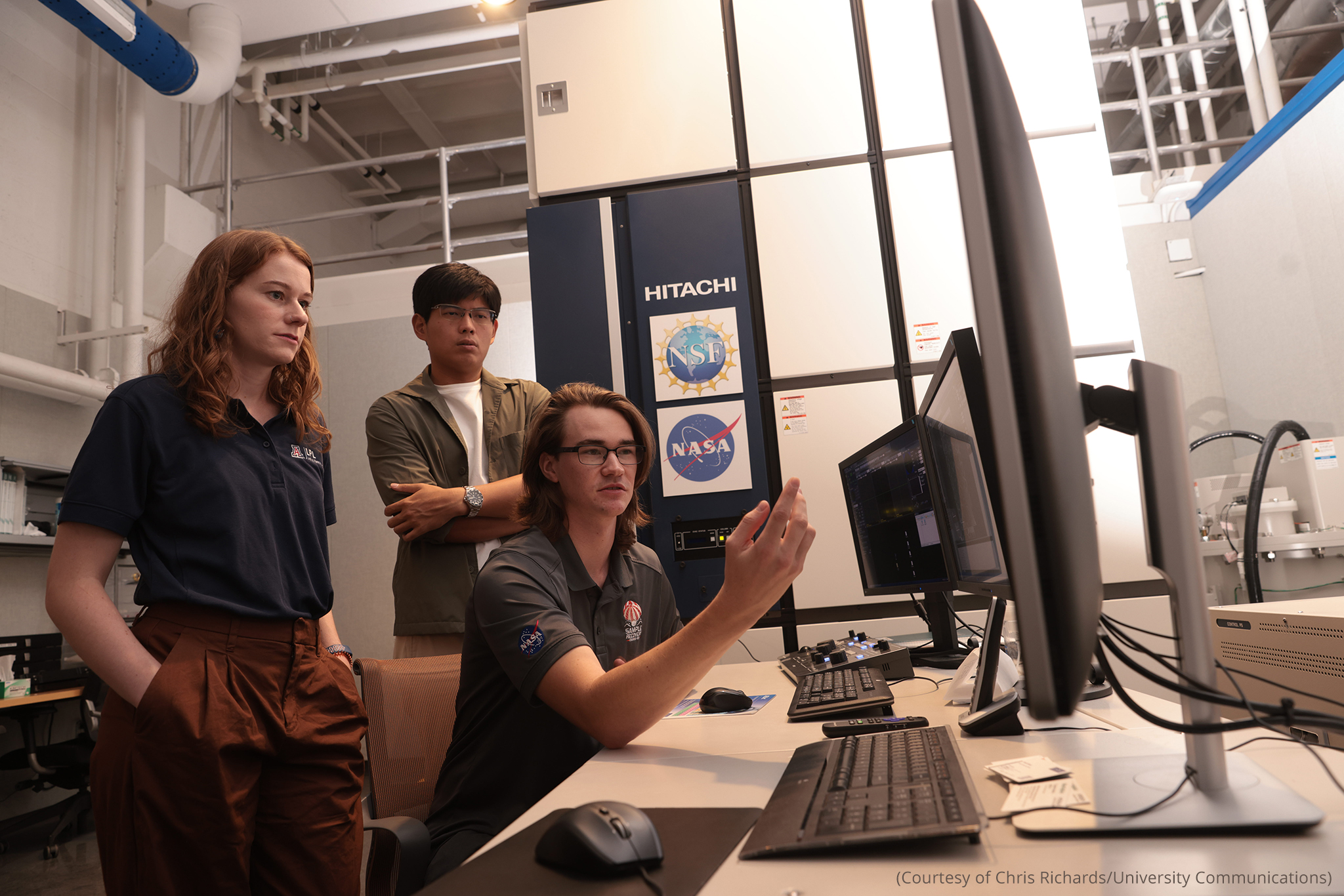 Lucas Smith of the University of Arizona is among the university researchers studying samples taken by NASA from the asteroid Bennu. (Courtesy of Chris Richards/University Communications)
Lucas Smith of the University of Arizona is among the university researchers studying samples taken by NASA from the asteroid Bennu. (Courtesy of Chris Richards/University Communications)
It’s a moment Lucas Smith won’t forget: the day he realized how lucky he was to be able to study space objects in the planetary laboratory at the University of Arizona in Tucson.
He was examining a sample of a meteorite, a piece of an asteroid that fell to Earth, the graduate student told ShareAmerica, when a professor walked in and announced, “I have a big box of moon rocks here,” after keeping them for 50 years NASA gave samples from its Apollo missions – the first to take humans to the moon – to universities for research.
Today, researchers like Lucas Smith are receiving more samples whose study could reshuffle the cards in our understanding of the solar system.
On September 24, NASA’s OSIRIS-REx (Origins, Spectral Interpretation, Resource Identification, Security, Regolith Explorer) probe returned a sample of the asteroid Bennu to Earth. A NASA spacecraft’s robotic arm picked up the sample in October 2020, when the asteroid was 321 million kilometers from Earth.
 According to Lucas Smith, who is seen here placing a sample of Bennu into a machine for analysis, the asteroid could help researchers study the origin of our sun. (Courtesy of Chris Richards/University Communications)
According to Lucas Smith, who is seen here placing a sample of Bennu into a machine for analysis, the asteroid could help researchers study the origin of our sun. (Courtesy of Chris Richards/University Communications)
Thanks to the collected fragments, researchers could not only learn more about this 4.5 billion-year-old asteroid, but also reveal certain secrets about the formation of our planet, emphasizes Anjani Polit, a systems engineer responsible for implementing the work of OSIRIS-REx Mission.
“Asteroids like Bennu are time capsules that contain the beginnings of the solar system,” she told ShareAmerica. Bennu could have brought water and other molecules, precursors of life, to Earth. This asteroid sample can teach us a lot. »
NASA support for higher education
NASA has distributed dust samples from outside the capsule that brought Bennu’s samples back to Earth, but that’s just the beginning. American colleges that have received them include Boston College, Brown University, California Institute of Technology, Purdue, Rowan University and the University of Virginia.
NASA will also send fragments to museums and partners in Canada and Japan. Much of the asteroid sample will be preserved for future generations.
NASA’s actions are consistent with its long-standing support of research. Each year, the space agency distributes 400 lunar samples* to universities in the United States and abroad. Harold Connolly Jr., a professor in the School of Earth and Environmental Sciences at Rowan University in New Jersey, believes that engaging with researchers from diverse backgrounds is critical to advancing science.
” The mission [de la NASA] “We have always been focused on training the next generation of scientists,” says Harold Connolly, who helps distribute the Bennu fragments.
 Zoë Wilbur, Lucas Smith and Iunn Jenn Ong, researchers at the University of Arizona, analyze samples from Bennu. (Courtesy of Chris Richards/University Communications)
Zoë Wilbur, Lucas Smith and Iunn Jenn Ong, researchers at the University of Arizona, analyze samples from Bennu. (Courtesy of Chris Richards/University Communications)
A look into the distant past
Lucas Smith explains that meteorites and asteroids contain presolar grains that can give scientists clues about the formation of stars like our Sun. Unlike meteorites, which can become contaminated if they fall to Earth, the Bennu samples were recovered from space, meaning they could yield specimens of intact presolar grains, he adds.
He has already examined the exterior of the OSIRIS-REx capsule and believes additional samples arriving in the coming months will provide even greater research opportunities.
“What fascinates me [dans ces fragments], Lucas Smith wonders, is that they form a kind of strand that brings everything together. They go further back in time than if we were to directly examine a planet itself. »
*in English
